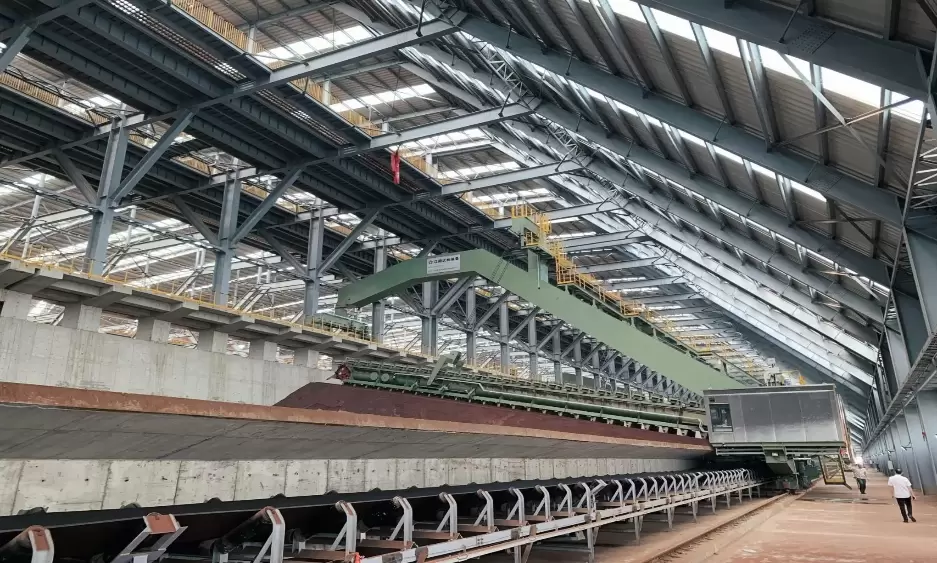The electric vehicle (EV) revolution is accelerating, but success in this competitive market depends on more than a powerful motor or high-capacity battery. Behind every smooth acceleration curve, safe deceleration, and efficient energy recovery lies one critical component — the Vehicle Control Unit (VCU).
The VCU acts as the central brain of an electric vehicle, orchestrating power distribution, communication, and control across multiple systems. When developing a new EV platform, the decision between using an off-the-shelf VCU and designing one from scratch can define project success or failure.
Here’s why selecting a production-proven VCU with more than half a million units already in the field is not only smart — it’s essential for your next EV project.
1. The Role of the VCU in Modern EV Architecture
In electric vehicles, the VCU serves as a high-level controller that coordinates key subsystems: traction inverters, battery management systems (BMS), DC/DC converters, on-board chargers (OBC), and even vehicle dynamics systems.
Essentially, the VCU interprets driver inputs — throttle, braking, gear selection — and translates them into torque commands, energy flow directives, and fault responses. It is the decision-making hub that connects everything in real time.
Without a reliable VCU, even the most advanced motor or high-density battery becomes a disconnected component, incapable of working harmoniously.
For reference, see the proven VCU: Vehicle Control Unit platform, which demonstrates scalable architecture and long-term reliability in mass production.
2. Why “Production-Proven” Matters
In automotive engineering, field validation is worth more than lab results. A production-proven VCU means it has already survived countless cycles of testing, real-world driving, thermal shocks, and communication stress across multiple vehicle platforms.
With over 0.5 million units deployed, the VCU platform referenced here has established a record of zero critical issues. That statistic isn’t just a performance brag — it represents:
-
Verified functional safety over millions of operating hours
-
Stable communication reliability across different CAN architectures
-
Proven software robustness under variable load and EMI conditions
For an OEM, such proof means fewer unknowns, faster validation, and greater assurance of compliance with automotive-grade standards (ISO 26262, AEC-Q100, etc.).
Every successful EV launch depends on predictable electronics — and nothing is more predictable than hardware and firmware that have already proven themselves on the road.
3. Lessons from EV Development: The Cost of Unproven Electronics
Developing a new vehicle platform involves thousands of design dependencies. When one controller behaves unpredictably, the entire integration timeline can be delayed by weeks or months.
Common failure scenarios with untested VCUs include:
-
Unstable CAN messaging, leading to synchronization errors between powertrain modules.
-
Timing jitter in control loops, causing torque oscillations or braking inconsistency.
-
Inadequate bootloader support, limiting software update capabilities.
-
Non-robust diagnostics, making root-cause analysis time-consuming during validation.
The result? Integration bottlenecks, software patch cycles, and expensive vehicle re-testing.
By contrast, using a field-proven VCU minimizes these risks and gives developers a stable foundation to build upon from Day 1.
4. Hardware That’s Ready for Mass Production
A mass-produced VCU must satisfy several demanding criteria that go beyond simple functionality.
a. High-Performance MCU and Architecture
The production-proven design you can reference includes an MCU with a 200 MHz dominant frequency, providing sufficient headroom for real-time control, diagnostics, and communication.
b. Dual CAN Channels
Two independent CAN interfaces enable:
-
Redundant communication for critical systems
-
Wake-up functions for low-power modes
-
Multi-domain control between powertrain, chassis, and body systems
c. Industrial-Grade Durability
Every production-grade VCU must operate across wide temperature ranges, resist vibration, and survive in EMC-heavy environments without communication dropouts.
d. Calibration and Verification Tools
The best systems support rapid prototyping, automatic code generation, and hardware-in-the-loop (HIL) testing — all key to accelerating development cycles while maintaining validation integrity.
These aren’t theoretical capabilities; they’re built into VCUs that have already been mass-produced at scale, supporting passenger car programs from global OEMs.
5. Software Maturity: The Silent Advantage
While hardware robustness ensures reliability, software defines intelligence.
A production-proven VCU has gone through multiple OEM software cycles, which means its firmware is mature, modular, and designed for:
-
Unified Diagnostic Services (UDS) for standardized testing and updates
-
Bootloader support for secure firmware reprogramming
-
Configurable state machines that can be adapted to different EV architectures
This pre-tested software backbone drastically reduces integration time, since many functions — torque control, regenerative braking, energy management, and safety handling — are already verified under automotive-grade conditions.
6. Time-to-Market Advantage
In the EV industry, speed defines success. Every month of delay costs engineering resources and market opportunity.
Using an existing, validated VCU allows your engineering team to:
-
Skip hardware bring-up and debugging
-
Reuse proven communication stacks
-
Focus development time on calibration and unique value-add software
Instead of spending 18–24 months developing and certifying a new controller, teams can shorten the development cycle to 6–9 months using a pre-validated, mass-production VCU platform.
This is particularly advantageous for startups or OEMs expanding into new market segments (e.g., light commercial EVs, two-wheelers, or niche passenger cars).
7. Safety and Diagnostic Confidence
Safety validation consumes a major portion of EV development budgets.
A production-proven VCU simplifies that process by offering:
-
Built-in fault management systems
-
Self-checking diagnostics for sensors, actuators, and communication lines
-
Well-documented failure response modes
This ensures your vehicle can safely transition to limp-home or fault states without endangering passengers or damaging the powertrain.
Moreover, OEMs can reuse the same fault libraries and test cases already established during prior mass-production validation — a major time and cost advantage.
8. Supply Chain Stability and Scalability
In recent years, supply chain disruptions have challenged automotive programs worldwide. Selecting a production-grade VCU means selecting a component with established supply partners, stable tooling, and verified production lines.
A controller already in volume production guarantees:
-
Long-term parts availability
-
Shorter lead times
-
Proven quality control at scale
Whether your program targets 5,000 or 50,000 vehicles per year, scaling with a production-proven platform reduces procurement risk and ensures continuity.
9. Supporting Future Innovations
One key reason to select a field-tested VCU is that it provides a future-ready foundation.
As EV technologies evolve — such as integration with ADAS systems, connectivity modules, or V2X communication — a flexible, proven VCU allows incremental feature upgrades without complete redesigns.
Features such as automatic code generation, HIL testing, and rapid prototype support make it easier to implement new algorithms while keeping core hardware and diagnostics unchanged.
This modularity not only reduces cost but also enables continuous improvement and software-defined vehicle (SDV) strategies.
10. Building on a Proven Platform
For companies seeking to launch vehicles efficiently, confidence in the electronic control architecture is vital.
A VCU with over 0.5 million production units demonstrates a maturity curve that few components achieve.
It’s not simply an electronic module; it’s an ecosystem of reliability — a product refined through millions of miles, hundreds of field calibrations, and years of validation.
Using such a controller gives your EV program a tested backbone that delivers both reliability and scalability.
To explore the architecture, capabilities, and technical specifications in detail, visit the official product page:
VCU: Vehicle Control Unit.
Conclusion
Developing a new EV platform is a complex engineering endeavor that blends mechanical precision, electrical safety, and software intelligence.
A production-proven
About Author


